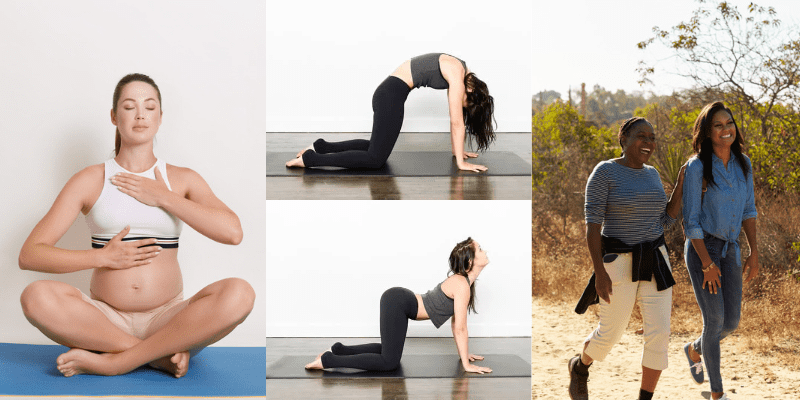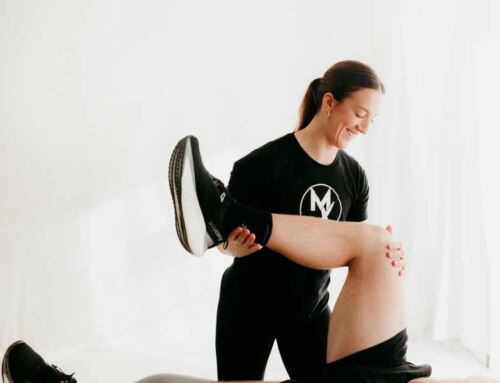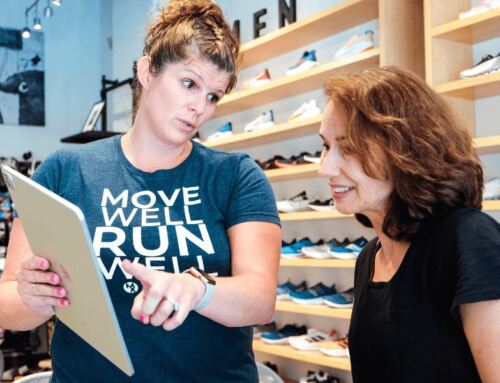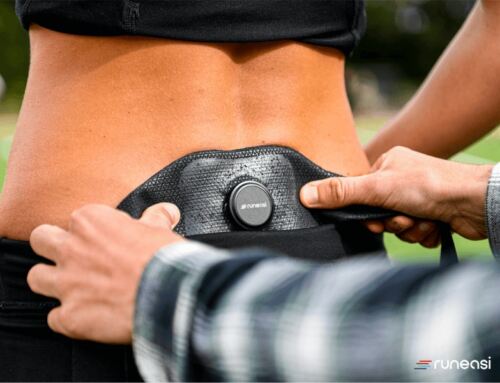Looking to Return to Running Postpartum?
People have tons of medical appointments leading up to birth, then they have a 6-week follow-up and are typically cleared to return-to-exercise at this point. So, does this mean you should hop back into your old fitness routine right away? Probably not.
In reality, although most people are mentally prepared to return to higher intensity exercise before their bodies are ready, there are some gentle exercises that can often be done before the 6-week mark.
The average return-to-run timeline postpartum is about 12 weeks. This is because of the changes the body goes through during pregnancy and delivery—whether it be vaginal or via cesarean section.
Running is considered a moderate to high impact activity and your legs and pelvic floor have to work to absorb this impact. It is also important that when returning to running your pelvic floor can do its job of supporting your pelvic organs during impact activities. Therefore, increasing your lower body strength can help to take some burden off your pelvic floor.
So Where Do I Start?
Initially postpartum, there are some breathing exercises that you can begin to start regaining connection with your breath, abs and pelvic floor. Since the activities required to care for a baby have a higher demand than breathing, there are also some gentle exercises that can often begin before the 6-week mark.
During this time it’s important to stop exercising and follow up with a provider if you’re experiencing pelvic pressure, pain, leaking of urine, stool or gas, and bleeding that is unrelated to the menstrual cycle during or after exercises.

Weeks 0-2
- Breathing with pelvic floor and abdominal contraction
- Start with hands on belly, breathe in and feel the lower abdomen expand. Breath out like you’re blowing through a straw, feeling the pelvic floor gently contract and abdominals draw in.
- Cat-Cows
- On hands and knees, alternate between arching and rounding your back.
- Walking
- Start with flat surfaces at a comfortable pace, without pushing a stroller or walking with a carrier.

Weeks 2-4
- Glute bridges
- Lying on your back with your knees bent and feet on the floor, lift your bottom off the floor as you exhale, relax and inhale as you come back to the floor.
- Hands and knees core lift
- On hands and knees, exhale as you lift one knee off the floor, inhale and relax.
- Progress walking
- Increase walking time by adding about 2-3min/walk or about 5-7min a week.
Weeks 4-6
- Body weight squats
- Standing with feet hip width apart, exhale as you sit down into a squat and stand back up.
- Body weight lunge
- Standing with feet together, step one foot back and lower down into a lunge, stand up and bring feet together.
- Progress walking
- Continue adding walking time, if at 30 min, begin increasing speed or add a stroller.
Looking to Screen Yourself to Return to Running?
It can be helpful to get a better idea of readiness to return to run by identifying areas that require the most attention. Here’s a general outline to assess run readiness after you’ve been cleared to exercise:
Impact
30 minutes of walking without pain or pelvic floor symptoms
20sec single leg balance each side
60sec running in place
10 forward bounds
10 single leg hops in place
Strength
10 single leg RDL’s per side
20 Single leg calf raises per side
20 single leg bridges per side
10 single leg squats each side
60sec wall sit
Other Considerations
When it comes to returning to running postpartum mental health status, scar mobility at the perineum, breastfeeding, and sleep all must be taken into consideration. Sleep is essential for physical and mental health, and we know that in athletes, sleep and training fatigue increase risk of injury. Finding the right running shoes for your specific feet is also important. Furthermore, for individuals who are breastfeeding, it’s important to ensure sufficient caloric input, hydration, and comfort with a supportive bra.
Conclusion
It’s important to focus on recovery before beginning a running routine, this goes beyond just letting the pelvic floor and abdomen heal. Birth can be a traumatic experience, so taking the time to focus on mental health, bonding with the baby, and finding a new routine is an essential part of healing to return to running.
In the first couple weeks postpartum, gentle breathing exercises to connect to the pelvic floor and abdominals as well as progressive walking can generally begin. Running should not begin until there are no pelvic floor issues with walking. Signs to stop running and follow up with a medical professional include incontinence, urinary or fecal urge that cannot be deferred, vaginal bleeding, pain, and pelvic pressure or heaviness.
At MovementX, we have physical therapists who are trained in postpartum pelvic floor and abdominal assessment to identify your functional limitations and help to establish a personalized return to run program. Schedule an appointment with our specialists today.
References
- Donnelly G, Brockwell E, Goom T. Return to running postnatal – guideline for medical, health and fitness professionals managing this population. Physiotherapy. 2020;107:e188-e189. doi:10.1016/j.physio.2020.03.276
- Christopher SM, Gallagher S, Olson A, Cichowski S, Deering RE. Rehabilitation of the Postpartum Runner: A 4-Phase Approach. Journal of women’s health physical therapy. 2022;46(2):73-86. doi:10.1097/JWH.0000000000000230
About the Author
Dr. Mattie Overton is a physical therapist in Durham, North Carolina. With over 15 years experience, she has a track record of helping a wide variety of patients live their best with added expertise in pelvic health, vestibular, and neurological treatments. If you’re looking for an ideal partner on your journey to wellness, look no further than Dr. Mattie Overton.








